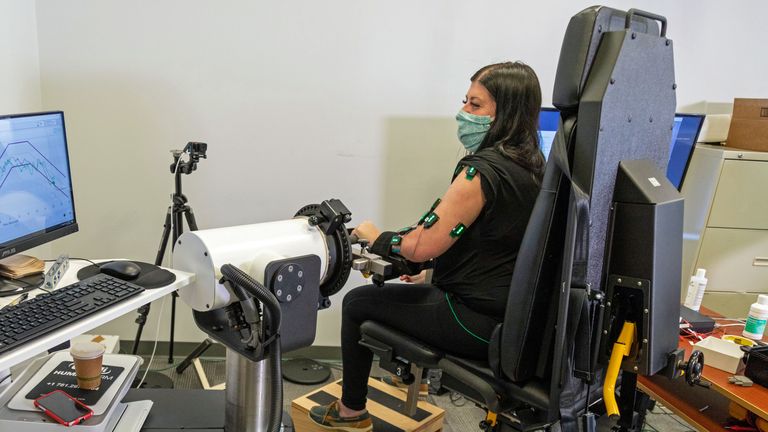A stroke survivor has been able to move her hand and arm for the first time in nine years after spinal stimulation.
In 2012, 22-year-old Heather Rendulic suffered a stroke that left her with a paralyzed left side.
Researchers at the University of Pittsburgh and Carnegie Mellon University used the new technology Stimulate the spinal cord in her neck.
Ms Rendulic, 33, can move a can of soup and even cut a steak with a knife and fork while being prodded, something she hasn’t been able to do for almost a decade.
Ms Rendulic, who lives in the US, said: “The stimulation feels a bit like scratching an itch, it never hurts, but I would say it takes some getting used to.
“It’s amazing because I can move my arms and hands in a way I haven’t done in almost a decade.”
It is estimated that around 100,000 people in the UK suffer a stroke each year.
About two-thirds of the 1.2 million survivors were unable to return to work, in part due to long-term effects on movement control.
“The whole lab is crying”
“We found that electrical stimulation of specific areas of the spinal cord allowed patients to move their arms in ways they couldn’t do without stimulation,” said Marco Capogrosso, assistant professor of neurosurgery at the University of Pittsburgh and co-senior study author.
He said Ms Rendulic was “able to move her hand and arm nine years later from day one” after receiving the stimulation.
“The whole lab was crying because … we really didn’t expect it to work so quickly.”
Read more on Sky News:
Nicola Bulley Family’s “Pain”
PM criticizes changes to Roald Dahl’s book
The researchers believe their new technique may offer hope to those considered permanently disabled.
According to the study, the benefits of spinal stimulation were felt for up to four weeks after the procedure ended, with no serious side effects.
The procedure involves implanting a pair of thin metal electrodes that look like spaghetti wire along the neck to engage intact nerve cells.
It is hoped that more trial participants will give researchers an idea of which stroke patients could benefit the most.
